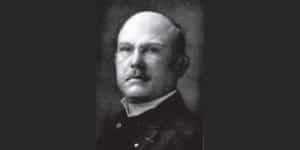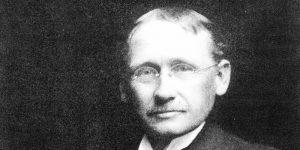Tom Peters biography and books

Tom Peters (1942) is a famous researcher, consultant, writer and management guru in the are of successful business management practices. Tom Peters is best known for his career at McKinsey & Company, his contribution to the development of the 7S Framework (McKinsey) and the further development of Chaos Theory on organizational development.
Tom Peters biography
Dr. Tom Peters academic career started when he obtained a Bachelor degree (BSc.) in civil engineering from Cornell University in 1965. He obtained his Master’s degree (MSc.) in civil engineering in 1966.
Peters received his MBA degree and his doctorate (Ph.D.) from Stanford Business School shortly after.
Tom has a broad background as far as work experience is concerned, He served in the United States Navy during the Vietnam War for a period of 4 year. He also worked as a senior advisor for the White House. From 1974 Peters started working as a management consultant for the renowned McKinsey & Company.
Despite the fact that he had become a partner and had provided many international organizations with sound advice and implementations, Tom Peters left McKinsey which was also due to the great success of his book In Search Of Excellence (1982).
Tom Peters has been working as an independent consultant since 1981 and he speaks about his theories and practical examples around the globe.
Tom Peters quotes
- “Excellent firms don’t believe in excellence – only in constant improvement and constant change.”
- “Management is about arranging and telling. Leadership is about nurturing and enhancing.”
- “Almost all quality improvement comes via simplification of design, manufacturing… layout, processes, and procedures.”
- “If a window of opportunity appears, don’t pull down the shade.”
- “Leaders don’t create followers, they create more leaders.”
- “Vision is dandy, but sustainable company excellence comes from a huge stable of able managers.”
- “Everyone has a chance to learn, improve, and build up their skills.”
- “The simple act of paying positive attention to people has a great deal to do with productivity.”
- “The best leaders… almost without exception and at every level, are master users of stories and symbols.”
- “Business is about people. It’s about passion. It’s about bold ideas, bold small ideas or bold large ideas.”
- “Life is pretty simple: You do some stuff. Most fails. Some works. You do more of what works. If it works big, others quickly copy it. Then you do something else. The trick is the doing something else.”
- “If you’re not confused, you’re not paying attention.”
- “Leaders trust their guts. “Intuition” is one of those good words that has gotten a bad rap. For some reason, intuition has become a “soft” notion. Garbage! Intuition is the new physics. It’s an Einsteinian, seven-sense, practical way to make tough decisions. Bottom line, circa 2001 to 2010: The crazier the times are, the more important it is for leaders to develop and to trust their intuition.”
- “Many of the innovative companies got their best product ideas from customers. That comes from listening, intently and regularly.”
- “Unless you walk out into the unknown, the odds of making a profound difference in your life are pretty low.”
Books and publications
- 2012. Really First Things First. (Kindle Edition) New Word City, Inc.
- 2010. The circle of innovation: You can’t shrink your way to greatness. Random House LLC.
- 2010. The Pursuit of Wow!: Every person’s guide to topsy-turvy times. Random House LLC.
- 2010. The Little BIG Things: 163 Ways to Pursue EXCELLENCE. Harper Business.
- 2008. The wow project. IEEE Engineering Management Review, 36(2), 70-76.
- 2006, 1982. In search of excellence: lessons from America’s best run companies. Harper Business.
- 2005. The Essentials Series (Leadership, Talent, Design, Trends).
- 2003. Re-imagine! Business Excellence in a Disruptive Age. DK Publishing.
- 2002. Performance reassessment of a real‐time seizure‐detection algorithm on long ECoG series. Epilepsia, 43(12), 1522-1535.
- 1999. The Project 50 (Reinventing Work): Fifty Ways to Transform Every “Task” into a Project That Matters!. Knopf.
- 1999. The Brand You 50 (Reinventing Work): Fifty Ways to Transform Yourself from an Employee’ into a Brand That Shouts Distinction, Commitment, and Passion!. Random House LLC.
- 1997. The brand called you. Fast Company, 10(10).
- 1994. The future of workplace learning and performance. Training and Development, 48(5), 36-47.
- 1994. The Tom Peters Seminar: Crazy Times Call for Crazy Organizations.
- 1992. Liberation management: necessary disorganization for the nanosecond nineties.
- 1992. Liberation management. New York: Alfred A. Knopf (pp. 15-17).
- 1991, 1988. Thriving on Chaos: Handbook for a Management Revolution. Harper Perennial.
- 1990. The best new managers will listen, motivate, support: Isn’t that just like a woman. Working Woman, 15(9), 142-143.
- 1989. The service edge: 101 companies that profit from customer care. New York: New American Library.
- 1988. Thriving on chaos: Handbook for a management revolution. The Journal of Continuing Higher Education, 36(2), 27-28.
- 1988. Restoring American competitiveness: Looking for new models of organizations. The Academy of Management Executive, 2(2), 103-109.
- 1988. Facing Up to the Need for a Management Revolution. California Management Review, 30(2).
- 1988. Leadership Excellence in the 1990s: Learning to Love Change, Journal of Management Development , vol. 7, no. 5, pp. 5-9
- 1984. A Passion for Excellence: The Leadership Difference.
- 1982. The rational model has led us astray, Journal: Strategy & Leadership , vol. 10, no. 2, pp. 16-23.
- 1980. Structure is not organization, Journal: Business Horizons , vol. 23, no. 3, pp. 14-26.
- 1980. Management systems: The language of organizational character and competence, Journal: Organizational Dynamics – ORGAN DYN , vol. 9, no. 1, pp. 3-26.
- 1979. Beyond the matrix organization, Journal: Business Horizons , vol. 22, no. 5, pp. 15-27.
- 1978. Symbols, patterns, and settings: An optimistic case for getting things done, Journal: Organizational Dynamics – ORGAN DYN , vol. 7, no. 2, pp. 3-23.
How to cite this article:
Van Vliet, V. (2010). Tom Peters. Retrieved [insert date] from Toolshero: https://www.toolshero.com/toolsheroes/tom-peters/
Original publication date: 12/01/2010 | Last update: 05/16/2023
Add a link to this page on your website:
<a href=”https://www.toolshero.com/toolsheroes/tom-peters/”>Toolshero: Tom Peters</a>











